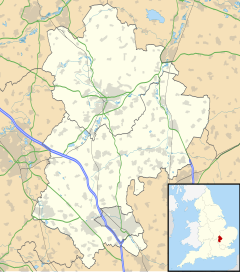Shillington, Bedfordshire
| Shillington | |
|---|---|
 Church Street |
|
| Shillington shown within Bedfordshire | |
| Area | 1.79 km2 (0.69 sq mi) |
| Population | 1,842 (2011 census) |
| • Density | 1,029/km2 (2,670/sq mi) |
| OS grid reference | TL127340 |
| Civil parish |
|
| Unitary authority | |
| Ceremonial county | |
| Region | |
| Country | England |
| Sovereign state | United Kingdom |
| Post town | HITCHIN |
| Postcode district | SG5 |
| Dialling code | 01462 |
| Police | Bedfordshire |
| Fire | Bedfordshire and Luton |
| Ambulance | East of England |
| EU Parliament | East of England |
| UK Parliament | |
Shillington is a village and civil parish in Bedfordshire, England. In the south of the parish the hamlet of Pegsdon is in the Barton Hills National Nature Reserve and a salient of the county into Hertfordshire. Since 1985 its administration has included the village of Higham Gobion, south-west on the minor road leading to the main north-south road in the district, the A6. It has a population of 1,831 and is centred midway between stopping services railway stations on the Midland Main Line and East Coast Main Line 6 miles (9.7 km) away. Farmland and hedgerows forms 95% of the land use and to the south and north of the boundaries is intermittent woodland.
The first recorded name of the village (1060) is Scytlingedune, literally translating to 'hill of the people of Scyttle'. Scyttle being a Saxon. This name gradually evolved into an unfortunate Shytlington in official returns and letters of the 17th and 18th centuries so was later bowdlerised.
Miscellaneous Roman artefacts have been found.
Shillington is mentioned in the Domesday Book. The entry is headed: "Sethlindone: [overlord] St Benedict's of Ramsey. a broken mill, 2 others". It contained 34 households, of which four were slaves, however 27 were villagers or villeins, and five were homes of more independent smallholders. Per year it rendered a large £12, assessed by the Book's compilers to be the same at the conquest twenty years before, had 14 ploughlands and woodland for 100 pigs per year.
The chief hamlets were: Lower Stondon in the north-east, Pegsdon on high ground south of the village on the hills which form the Hertfordshire border, Aspley — with Aspley Bury manor — to the south, Little Holwell, to the east, and Woodmer End and Bury End close to the village on the north.
...
Wikipedia

